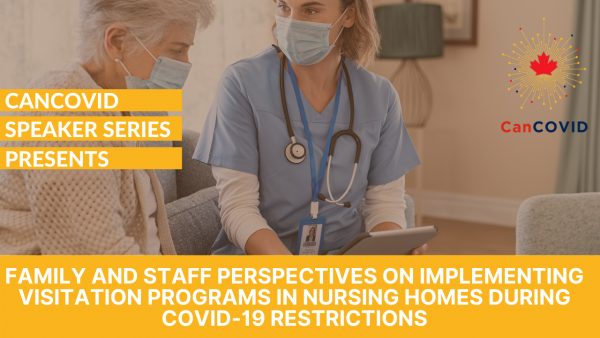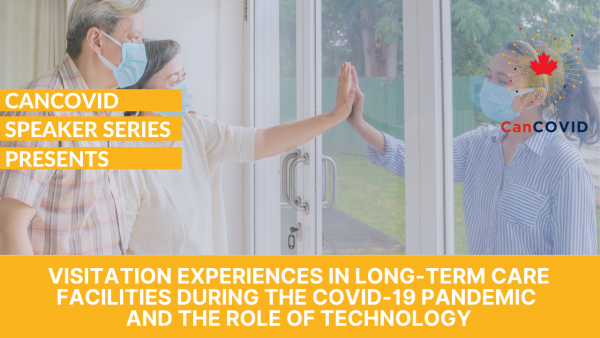COVID-19 Infection Prevention and Control (IPAC) in Long-Term Care Facilities in two OECD countries, the Netherlands and Denmark: Best Practices, Implementation, Compliance
Question: In countries belonging to the Organization for Economic Co-operation and Developing (OECD) that have implemented best practices/standards for IPAC of COVID‑19 in LTCFs:
- What are the 3-5 best practices for IPAC?
- How were these IPAC best practices implemented (i.e. what supports/tools/methods were used to encourage adoption)?
- What steps were put in place to ensure compliance with IPAC measures over time to meet performance expectations (i.e. what measures/systems/processes increased adherence to best practices/standards)?
Executive Summary
This Issue Note summarizes our understanding of ‘best practices’ for COVID‑19 infection prevention and control (IPAC) in long-term care facilities (LTCFs) in two OECD countries recognized as high performing in this area—the Netherlands and Denmark.
Our analysis led us to an inclusive definition of IPAC measures. We considered policies, procedures, and practices in the health, social, and long-term care system that impact the prevention of infections in LTCFs (not merely the IPAC practices typically considered by the clinical/medical discipline of infectious disease control). In that sense, we considered IPAC more as a concept than as a particular set of pre-defined clinical practices. We describe how these systemic ‘best practices’ in IPAC were implemented in the first place (i.e. supports, tools, policies that enabled adoption), and how ongoing compliance over time was enabled. Considerations for Canada draw from both the published literature and from our expert consultations.
The main lesson from both the Netherlands and Denmark is that we reap what we sow. In other words, systems are perfectly designed to get the results they get. Investment in health, social, and long-term care system design (and redesign) is crucial because future consequences, such as pandemics, are inevitably shaped by it.
When the COVID‑19 pandemic began, both the Netherlands and Denmark already had pre-existing, robust, health and social care systems, into which long-term care (LTC) was well-integrated. Their respective long-term care systems were relatively well-resourced through long standing public investment, enabled by cultures that not only value older adults but have also chosen to invest public funds in their well-being. In other words, both the Netherlands and Denmark are universal welfare states with strong state capacity and a high degree of political trust, two systemic and cultural factors that have enabled policy implementation both before and during the pandemic.
Traditional IPAC measures as envisioned by the clinical/medical discipline of infectious disease control— such as an embedded IPAC program, appropriate ratio of IPAC staff, surveillance, use of routine practices and additional precautions, established reprocessing, environmental cleaning, hand hygiene program, infrastructure standards, efficient microbiology support to access testing with appropriate turn-around times, and effective HVAC—are layered upon the erstwhile solid foundation of the robustly designed and integrated health, social, and long-term care systems found in both the Netherlands and Denmark. As such, the ‘best practices’ in IPAC in these two countries are actually key features built into the design of their pre-existing health care, social care, and long-term care systems themselves, rather than ‘quick fixes’ employed only during the pandemic. Our analysis shows that these key system features are actually the ‘best practice’ in IPAC in these countries.
Throughout this report we describe the key IPAC features of the health, social, and long-term care systems themselves (which underpin their more traditional infection prevention and control measures) that have led to Denmark and the Netherlands achieving relatively low COVID‑19 infection rates in LTC.
Summary of ‘best practices’ for IPAC in the Netherlands (see Country Profile for details):
- ‘Intelligent’ visitor ‘lockdown’
- Investment by government in public communications informed by behavioural science
- Well-funded LTC system
- Relatively well-paid LTC staff
- ‘Cohort nursing’ and ‘nurse cohorting’
- Centralized allocation of personal protective equipment (PPE) via a single new national consortium.
Summary of ‘best practices’ for IPAC in Denmark (see Country Profile for details):
- Political attentiveness and broad public support for the LTC sector
- De-institutionalized, home-based, care for older adults
- Individual ‘abodes’ (i.e. single rooms) with home-like living spaces in all modern nursing homes
- Professionalization of LTC sector and decent working conditions
- Highly integrated health, social, and long-term care systems
- High COVID‑19 vaccination rates among staff and residents ‘nursing homes’ and re-vaccination (i.e. ‘boosters’/‘third dose’), without vaccine mandate due to high willingness
- Sick pay for LTC staff and health care professionals
- Local customization of visitor policies
Limitations
This report has several limitations, mainly due to the rapid timelines for production:
- Few published studies and no reviews of ‘best practices’ or of adoption supports, or strategies to enable adherence over time.
- Reliance on ‘real world’ evidence and perspectives from selected key informants, which may not represent all views and experiences.





